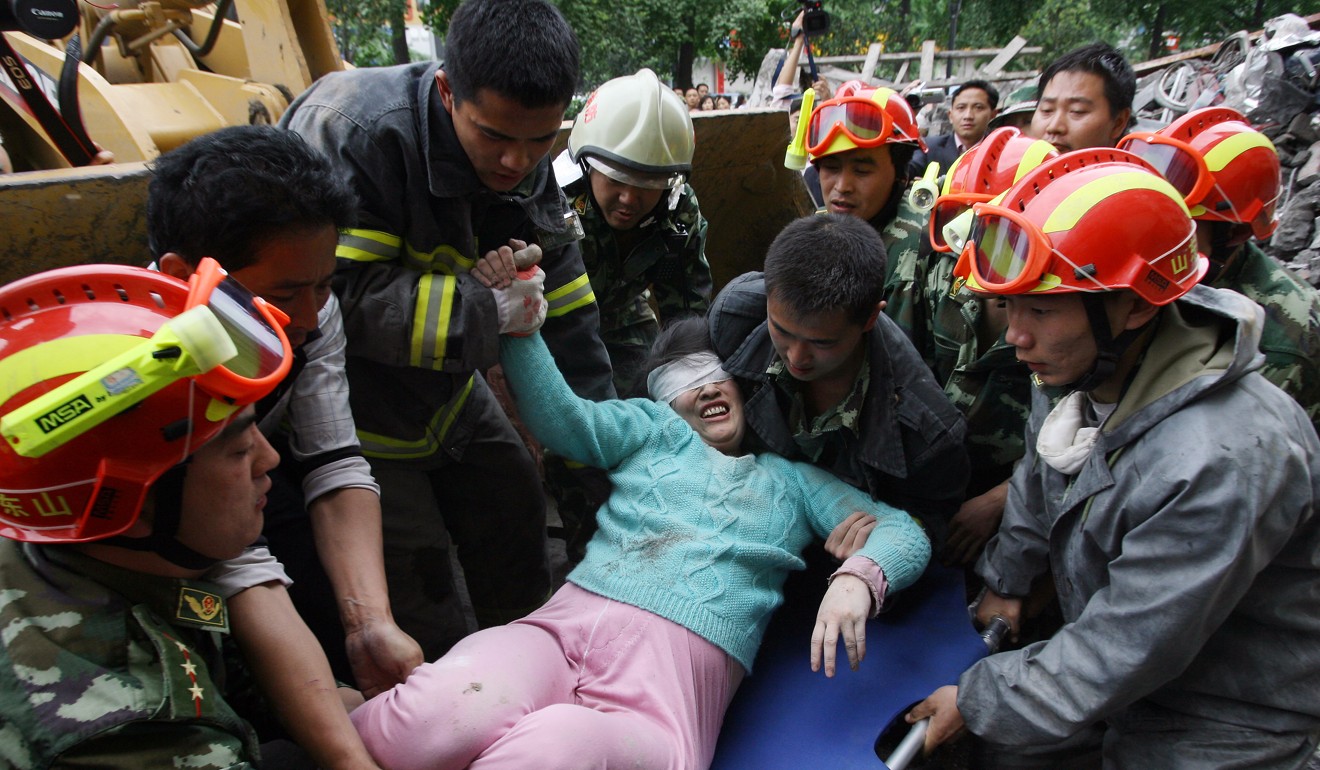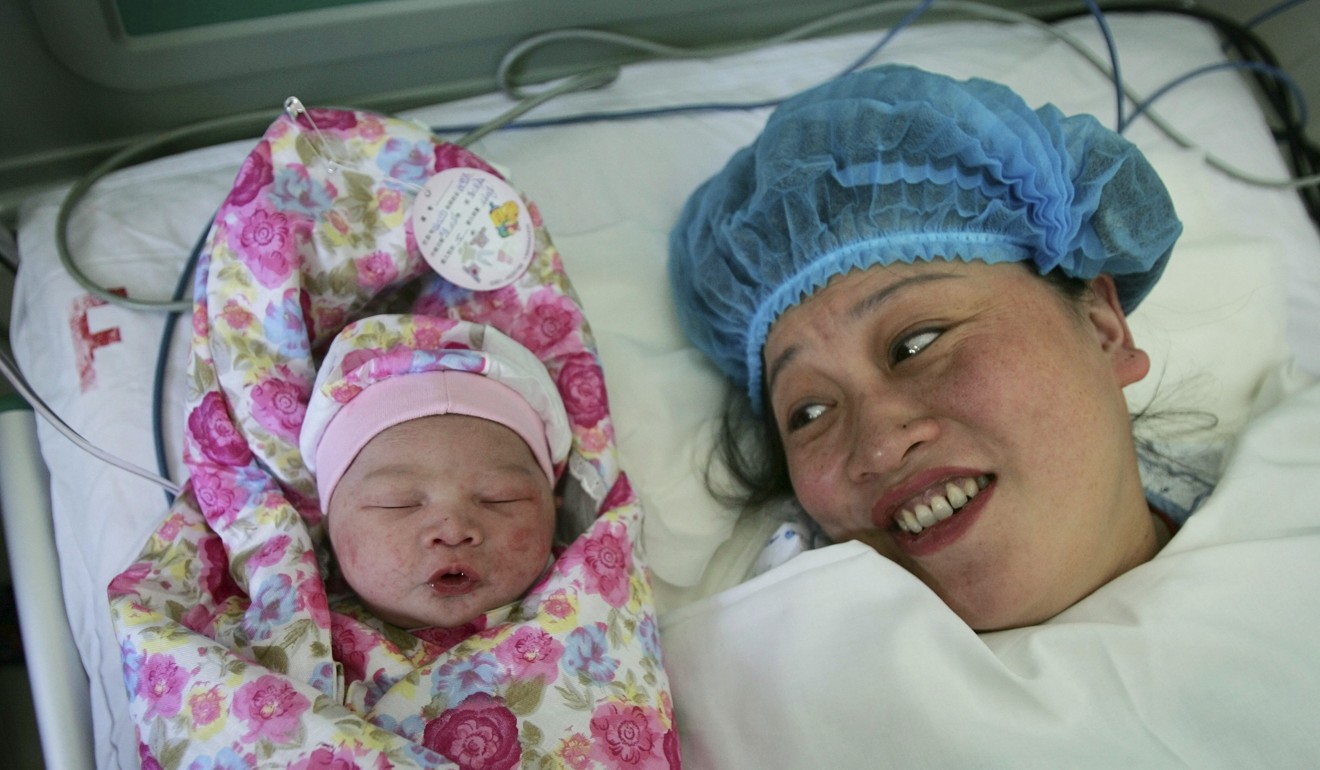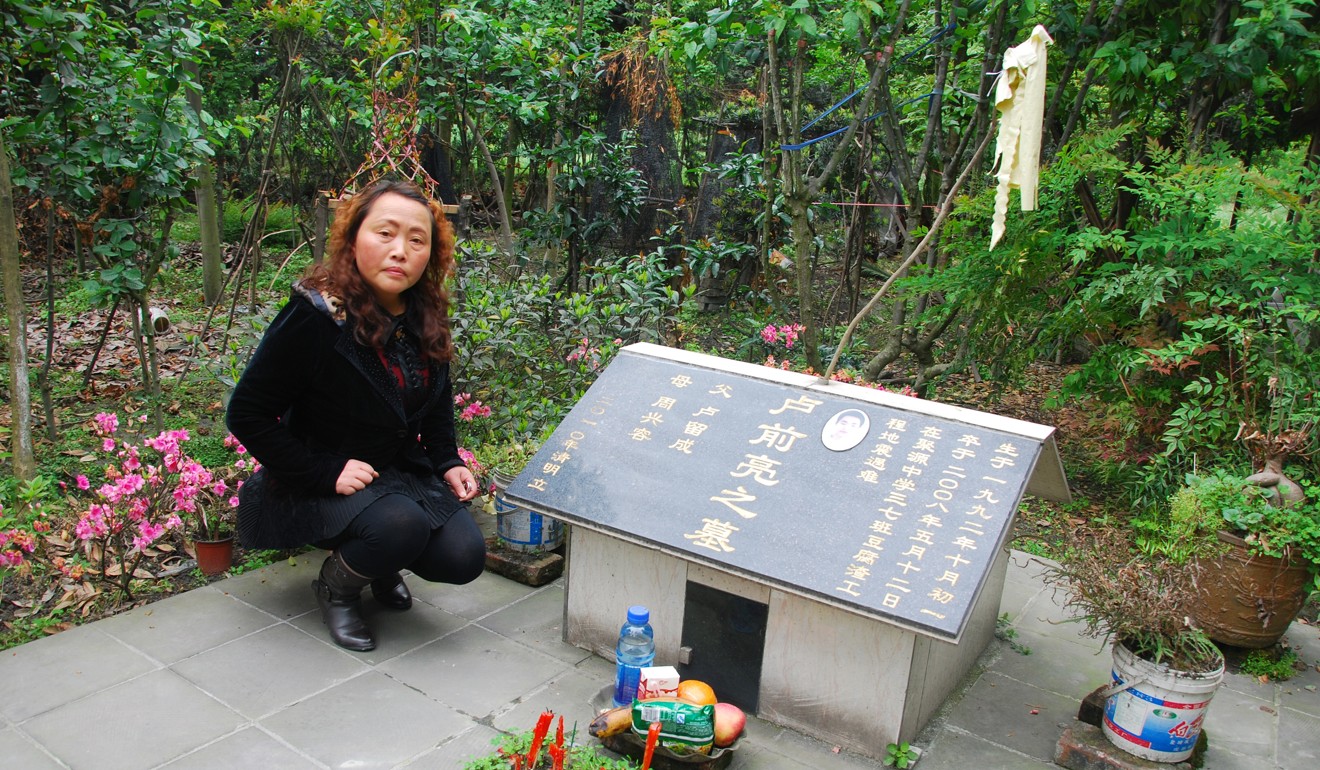
‘Our little miracle’: the children and the childless of the Sichuan earthquake
In just a few minutes, the May 12, 2008, quake killed a generation of young people in some communities, leaving their parents to face the future alone
Pan Xiaoai was just days from turning 10 when she heard the story of her birth.
Sitting in bed at her home in the city of Dujiangyan in southwestern China’s Sichuan province, Xiaoai was speechless as her mother, Zhang Xiaoyan, recounted the 52 excruciating hours she lay buried under the debris of a seven-storey flat, heavily pregnant with the little girl.
“I couldn’t pity myself,” Zhang said. “I just kept thinking that the most pitiful one was the little baby girl inside me who would soon die before she could even get to see this world.”
Sichuan earthquake, 10 years on: how a tragedy changed China
Zhang, 44, was eight months pregnant with Xiaoai when the quake struck the couple’s home on the outskirts of Chengdu on the afternoon of May 12, 2008. Her husband, Pan Yuncheng, was away when the ceiling caved in on their second-storey flat, trapping Zhang under a pile of rubble.

Their government-built block was destroyed instantly while neighbouring private estates withstood the tremors, Pan said at the time.
For two days, rescuers passed food and water to Zhang through a small hole as they struggled to find a way to free her. As the hours dragged on, it became harder to breathe and Zhang grew sleepy despite her husband’s desperate calls for her to stay awake.
When she was finally pulled to safety after 6pm on May 14, the clapping and shouting around her were deafening, Zhang said.

Xiaoai came into the world a month later, in a hospital in Zhang’s hometown of Urumqi, Xinjiang, some 2,700km (1,700 miles) from Dujiangyan, where all the hospitals were already at capacity.
The girl was originally going to be named “Yingao”, meaning “to welcome the Olympics”, which Beijing hosted in August that year. But after the quake, the couple decided on “Xiaoai”, or “little love”, to honour those whose care helped see them through the disaster.
“We hardly paid a cent in the month I spent resting before giving birth. Hainan Airlines covered our flight to the Urumqi hospital for the delivery,” Zhang recalled.
“On top of all that, we were given more than 3,000 yuan donated by medical staff, as well as a huge amount of milk powder that ensured our baby was well fed for the next three to four months.
“This was a tremendous help to us.”

She said the magnitude-8 quake left the family with little more than the clothes on their back, but with the help of her parents they bought a home in Dujiangyan in a residential block that had withstood the earthquake. The couple also built a metal and timber structure around Xiaoai’s bed to protect her from any similar disaster.
“Xiaoai is our little miracle, born against all odds,” Pan said. “If, touch wood, such a massive earthquake ever strikes us again, this frame is here to ensure that our little girl gets another chance to survive.”

While Zhang and Pan have been able to watch their child grow, tens of thousands of other parents lost a child to the disaster.
According to official figures, at least 5,300 students were killed when more than 7,000 school buildings collapsed in the earthquake.
Zhou Xingrong, 53, lost her only child, her 15-year-old son Lu Qianliang, when Juyuan Middle School in Dujiangyan collapsed, killing more than 300 students.
She had two miscarriages within a year of the disaster as she and her husband tried to have another child.
“My husband is really eager to have a child but I can’t have one anymore,” she said, adding that the situation had put an enormous strain on their marriage.
Zhou and dozens of other mothers in a similar position have banded together online, forming a group on the popular social media app WeChat.
She said that the group helped and supported each other, sharing their feelings and problems.
“For instance, one of our members fell sick and needed medical help,” Zhou said. “We wasted no time in getting together petitioning the local government office. Some kind officials soon helped deal with her problem.”

Zhou has also waged a 10-year battle for an official investigation into the school’s construction. The authorities insist that the shock waves were the sole cause of the school collapses but parents and activists say that many of the buildings were poorly constructed, describing them as “tofu” structures.
Zhou’s quest for answers has taken her to Chengdu and Beijing, and landed her behind bars four times.
Over the years, Zhou has not been allowed to burn paper offerings or incense to mourn her son in public. But she has erected a tombstone for him in her backyard, inscribed with the words: “Died from a tofu school building”.
On the outskirts of Dujiangyan, the four-storey Xiange Middle School had all the hallmarks of a tofu building. More than 320 students were killed when it was levelled – but several low-rise structures in the area sustained only a few cracks.

As the stiff bodies of the students were pulled one by one from the debris 10 years ago, one father picked up a brick and raged about the lack of reinforcement in the school structure.
Shang Guoying, 44, whose only daughter Ren Sha was among the dead, said the collapse killed 43 boys and girls from her village of roughly 1,100 people.
“Except one or two naughty guys who skipped classes, almost a whole generation of youngsters in our village have been killed in the quake,” Shang’s husband, Ren Hongliang, said.
“For couples in our village who lost their child, 30 of them, with special local government approval, have since had another child.”
But Shang and Ren have not been among them, despite wanting to become parents again.
They said that they had been forgotten by the authorities and that they feared what would happen to them when they grew old.

